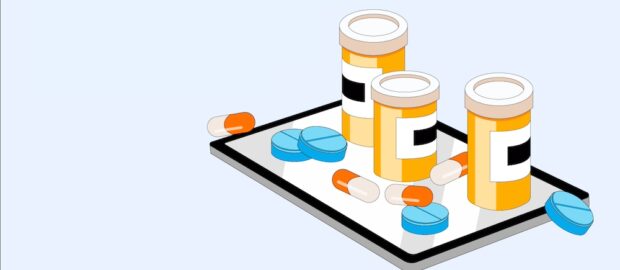최근 STAT+ 에는 디지털 치료제 회사들의 사업 모델에 대한 고민이 잘 설명된 아티클이 있어서, 제 생각을 덧붙여서 소개해드리고자 합니다.
초창기 디지털 치료제 회사들의 BM은 무척 간단했습니다. 바로 전통적인 처방약처럼 판매하는 것이지요. 인허가를 받고, 보험사로부터 보험 수가를 확보하고, 의사가 처방해주면 환자가 사용하는 모델입니다. 하지만 Pear, Akili 등의 여러 선도자들의 뼈아픈 시행착오 끝에 이 모델은 무척, 무척, 무척 어렵다는 것을 업계 전체가 배우게 되었습니다.
특히 Pear가 파산했을 때, 대표인 Corey가 직접적으로 언급했고, Akili 가 B2C 모델로 피봇팅하면서 (이제는 전 대표인) Eddie도 언급했던 것처럼, payer를 설득하기가 너무도 어려웠습니다. 이것이 어려울 것은 예상했지만, 예상보다 훨씬 더 어려웠다고 이야기 합니다. 이에 따라서 디지털 치료제 회사들은 (기존에 수가 받는 모델을 포함하여) BM에 대한 다양한 옵션을 고려하지 않을 수 없게 되었습니다.
예를 들어서, employer 시장에 health benefit으로 팔거나, (하드웨어가 있는 경우) DME (durable medical equipment)로 수가를 받는 것으로 돌파구를 마련해보려고 하거나, 혹은 remote therapeutic monitoring 코드를 활용해보려는 등의 시도가 있었습니다. 하지만 이러한 시도들이 아직까지 메이져한 돌파구를 만들어내지는 못하고 있는 상황입니다.
이번 아티클에는 다른 옵션들 몇가지가 언급되어 있는데요. 공황장애 디지털 치료제로 FDA 인허가를 받은 바 있는 Freespira의 경우에는 대형 보험사보다는 소형 보험사를 타겟팅하여 일단 시장에 진입하는 전략을 쓰고 있습니다. (아티클에는 ‘문틈에 일단 발을 끼워넣기’라고 재미있게 표현되어 있습니다.) 이런 전략은 소위 캐즘 마케팅에서도 D-day 상륙작전으로, 모든 자원을 동원하여 새로운 시장의 작고 뾰족한 침투 지점을 만들고, 이를 거점으로 하여 이후 주류 시장으로 확대한다는 전략과도 비슷합니다.
특히 이런 BM을 추구할 때 (디지털 치료제의 특성상) 사용자가 사용한만큼, 혹은 outcome이 좋아진만큼만 과금을 할 수도 있기 때문에, 이런 소위 ‘성공 보수 (success-based) 모델을 보험사에게 제시하고 있다고도 나옵니다. 사실 이런 ‘사용한만큼 과금한다’는 모델은 디지털 치료제 개발사에게 결코 유리한 모델은 아닌데요. 사용량이나 리텐션이 높지 않으면, 실제로 돈을 벌지는 못하기 때문입니다. 하지만 이런 불리한 모델을 감수하고서라도 일단은 시장 진입의 교두보를 만들겠다는 것으로 보입니다.
또 다른 모델은 바로 Akili 로 대표되는, 처방 모델을 버리고 B2C 시장으로 진출하는 전략입니다. Akili는 디지털 치료제 시장 전체를 대표하는 선구자 중의 하나인데요. 2022년 나스닥 상장 이후에 처방 건수, 매출 등의 지표가 좋지 않아서 내부적으로 고민을 많이 했을 것 같습니다. 메이져 보험사로부터는 수가를 여전히 받지 못하고 있고요.
그러던 차에, Covid-19 를 기점으로 파일럿 테스트를 했던 B2C 모델의 성과가 예상보다 좋게 나오면서, 아예 처방 모델을 버리고 앱스토어에서 사용자에게 직접 제공하는 쪽으로 사업 모델을 피봇팅을 하였습니다. 이렇게 피봇팅 하면서 (이제는 전 CEO인) Eddie Martucci 는 ‘(보험사가 아니라) 우리의 손으로 직접 운명을 결정할 수 있게 되었다’고 언급하기도 했습니다. 실제로 이런 피봇팅 이후에 2023년 3분기 매출은 2분기에 비해서 6배 이상 증가하는 효과가 있었습니다. 이를 통해 Akili는 런웨이 (자금 소진 시점)을 2025년 하반기로 늦추었다고도 언급합니다. (상장사가 런웨이를 언급하는 것 자체가 안타깝고도 씁쓸하긴 합니다.)
세번째로 BehaVR이 언급됩니다. 이 회사는 VR 기반으로 통증, 불안 등을 치료하는 회사인데요. 지난 2023년 가을에, digital chronic pain management platform인 Fern Health 와 합병해서 RealizedCare라는 회사가 되었습니다. 이를 통해서, ‘디지털 치료제’가 아닌 ‘care management’로 서비스를 포지셔닝하여 제공하고 있습니다.
CEO인 Aron Gani는 시장에서 가치를 측정할 수 있고, 지불할 수 있는 것을 제공해야 한다면서, ‘시장은 아직 디지털 치료제를 어떻게 deploy하고, 어떻게 돈을 내야 할지 모른다. 하지만, care management 에는 어떻게 돈을 내야 할지 안다’고 이야기하고 있습니다. 이렇게, 같은 제품과 서비스라도 어떻게 하면 시장이 더 잘 이해하고, 더 잘 받아들일 수 있는 가치로 제안할 것인지는 매우 중요하다고 할 수 있습니다. 새로운 것이 혁신적이고 멋있게 보이기는 하지만, 정작 헬스케어와 같이 보수적인 시장에 진입할 때에는 오히려 걸림돌이 되기도 합니다.
디지털 치료제 시장은 이제 초기를 벗어나면서 그동안의 hype는 걷혀지고 있습니다. 제가 디지털 치료제를 강의할 때면 항상 강조해왔던 것입니다만, 이 분야 결코, 결코 쉽지 않습니다. 이제는 단순히 새롭고 신기한 컨셉을 넘어서, 실제로 환자를 치료할 수 있고, 더 나아가서는 이제 사업적인 성과를 올려야 하는 때가 오고 있습니다. 이 분야에 투자된 자금도 꽤 커졌고, 이미 상장한 기업들도 나오고 있기 때문에 시장의 인내심이 아주 오래 남아 있을 것 같지는 않습니다. 따라서 이제는 정말로 BM에 대한 고민이 중요한 때가 되었습니다.
일각에서는 디지털 치료제에 대한 회의론도 나오고 있지만, 저는 이 역시 Gartner Hype Cycle에서 이야기하는 환멸의 계곡(Trough of disillusionment)을 건너는 중이라고 생각합니다. 이것도 제가 디지털 치료제 강의 때 항상 언급하는 말이지만, 저는 이 분야를 ‘단기적으로는 비관적으로 보고, 장기적으로는 낙관’ 합니다. 디지털 치료제가 이런 어려운 시기를 넘으려면 결국에 적절한 사업 모델을 찾는 것이 필수라고 생각합니다. 이런 사업 모델은 해당 디지털 치료제가 치료하려는 질병, 모달리티, 그리고 의료 환경에 따라서 달라질 것입니다. 이를 거쳐서 디지털 치료제가 이런 환멸의 계곡을 잘 넘을 수 있기를 기대합니다.
There was a great article in STAT+ recently about how digital therapeutics companies are struggling with their business models, and I thought I’d add my two cents.
In the early days, the BM for digital therapeutics companies was pretty simple. They sell like traditional prescription drugs: get licensed, get reimbursed by insurers, get prescribed by doctors, and get used by patients. But the industry as a whole learned the hard way from Pear, Akili, and other leaders that this model is very, very, very difficult.
Particularly when Pear went bankrupt, as Corey, the CEO, said directly, and as Akili pivoted to a B2C model, as (now former) Eddie also said, it was incredibly difficult to convince payers. We knew it would be difficult, but it turned out to be much more difficult than expected. This has forced digital therapeutics companies to consider different options for BM (including traditional reimbursement models).
For example, there have been attempts to break through by selling to the employer market as a health benefit, billing as durable medical equipment (DME) (if the hardware is available), or leveraging remote therapeutic monitoring codes. However, these attempts have yet to produce a major breakthrough.
There are some other options mentioned in the article, such as Freespira, which has just received FDA approval for a digital treatment for panic disorder, targeting smaller insurers rather than larger ones to get a foot in the door. (The article playfully refers to this as “getting a foot in the door.”) This is similar to the D-Day strategy in so-called chasm marketing, where you use all of your resources to create a small, sharp point of penetration in a new market, from which you can then expand into the mainstream market.
In particular, in pursuing this BM, it is said that they are proposing this so-called “success-based” model to insurers because (due to the nature of digital therapeutics) they may only charge users as much as they use or as much as they improve their outcomes. In fact, this “pay-as-you-go” model is not a favorable model for digital therapeutics developers, because if the usage or retention is not high, they do not actually make money, but it seems that they are willing to accept this unfavorable model to create a bridgehead to the market.
The other model is to ditch the prescription model and move into the B2C market, as exemplified by Akili. Akili is one of the pioneers of the entire digital therapeutics market, but after listing on the Nasdaq in 2022, the company must have had a lot of internal worries due to poor indicators such as prescriptions and sales. They were still not getting paid by major payers.
Then, in the wake of Covid-19, the B2C model that we piloted was performing better than expected, so we pivoted our business model away from the prescription model and towards offering it directly to users on the app store. In this pivot, (now former CEO) Eddie Martucci said, “We were able to take our destiny into our own hands (instead of the insurers)”. Indeed, after this pivot, Q3 2023 revenue grew more than 6x compared to Q2. In doing so, Akili also mentions that they pushed back their runway (when they run out of money) to the second half of 2025. (It’s bittersweet to hear a public company mention a runway at all).
The third company mentioned is BehaVR. This is a company that uses VR to treat pain, anxiety, and more. Last fall, it merged with Fern Health, a digital chronic pain management platform, to become a company called RealizedCare. In doing so, it is positioning its services as “care management” rather than “digital cures.
CEO Aron Gani believes that you have to provide something that the market can measure and pay for. “The market doesn’t yet know how to deploy digital therapies or how to pay for them. But they do know how to pay for care management. So it’s really about how you can offer the same product or service at a value proposition that the market understands better and is more receptive to. While something new may seem innovative and cool, it can actually be a stumbling block when entering a conservative market like healthcare.
The digital therapeutics market is now out of its infancy and the hype is starting to die down. As I always emphasize when I teach digital therapeutics, it’s not easy, it’s not easy, and it’s getting to the point where it’s not just a new and exciting concept, it’s actually going to be able to help patients, and even better, it’s going to be able to make a business case. There’s a lot of money invested in this space, and there are companies that have already gone public, so I don’t think the market’s patience is going to be there for very long, so it’s really time to start thinking about BM.
There’s some skepticism about digital therapeutics in some quarters, but I think we’re also crossing the trough of disillusionment that the Gartner Hype Cycle talks about, which is something I always say in my digital therapeutics lectures, but I’m “short-term pessimistic, long-term bullish” on this space. I think it’s essential for digital therapeutics to find the right business model at the end of the day, which will depend on the disease, modality, and healthcare setting that the digital therapeutic is trying to treat. I’m hopeful that digital therapeutics can make it through this trough of disillusionment.


![[논문] LLM이 의료 전문가보다 의학 텍스트 요약을 더 잘 한다](https://www.yoonsupchoi.com/wp-content/uploads/2024/03/Untitled-8-140x90.png)
![[영상] 카카오 브레인의 배웅 최고 헬스케어 책임자(CHO) 님 인터뷰](https://www.yoonsupchoi.com/wp-content/uploads/2024/03/배웅-부사장님-140x90.jpg)
![[공지] DHP 디지털 헬스케어 아카데미 2024 (6기)의 수강생을 모집합니다!](https://www.yoonsupchoi.com/wp-content/uploads/2024/02/홈페이지-메인배너-이미지-copy-140x90.jpg)
![[영상] 루닛 백승욱 의장님 인터뷰](https://www.yoonsupchoi.com/wp-content/uploads/2024/01/썸네일-종합.219-140x90.jpeg)
















